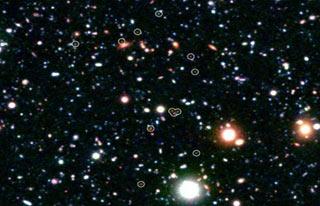
WASHINGTON (PTI): A team of astronomers have worked out precise distances of a large sample of galaxy clusters that may lead to a breakthrough in understanding the expansion history of the Universe and dark energy.
Researchers led by Dr Jeeseon Song from the University of Michigan identified an important sample of galaxy clusters whose distances have been determined accurately enough to study how the density of galaxy clusters varies with the age of the Universe.
To do this, they began with observations from the South Pole Telescope, a millimetre-wavelength survey telescope.
The team refined cluster distances to within a few per cent after follow-up work at the Blanco 4-metre telescope at Cerro Tololo Inter-American Observatory, a division of the National Optical Astronomy Observatory (NOAO) in the US.
"By looking at galaxy clusters at different epochs in cosmic history, astronomers can explore whether Dark Energy has acted differently at different times in the history of the Universe," Song said.
"Galaxies, including our own Milky Way galaxy, are vast assemblages of stars and gas. Clusters of galaxies, conglomerates of tens to hundreds of galaxies, are the largest structures in the Universe," Song added.
"They are dynamically changing and ageing over time. And that is very crucial in cosmological studies, because that's where we can see how Dark Energy is acting on the Universe, pulling the clusters apart," Song said in a NOAO statement.
Scientists have known for decades that in the expanding universe the farther away an object is, the faster it is receding from us.
Measuring velocity is based on an effect seen in everyday life: as an object moves further away, its light shifts to longer, or red, wavelengths (called redshift). As an object moves closer, the light wavelengths shorten, shifting to blue.
Because of the expansion of the Universe, objects with large redshifts are not only far away, they are also observed as they were a long time in the past. When measuring distant objects in the Universe, astronomers refer to the redshift using the letter z.
The galaxy clusters in this study have an average redshift, z, of about 0.6. At this redshift the Universe was only about half of its present age of 13.7 billion years.
But the clusters span a range in distance from those close enough to be seen almost as they are in the present universe, to some with z as large as 1.4, which means we see them as they appeared when the Universe was less than a third of its present age.
A related discovery from this work concerned Brightest Cluster Galaxies, or BCGs.
"The position of a BCG within a cluster indicates if the cluster is undergoing some violent internal motion perhaps because it has suffered a smashup with another cluster. By studying the frequency of such collisions, we learn if these clusters are unique or not. This is crucial to understanding Dark Energy in clusters," Alfredo Zenteno, the second author of the study, said.
 Previous Article
Previous Article Next Article
Next Article











The Indian Air Force, in its flight trials evaluation report submitted before the Defence Ministry l..
view articleAn insight into the Medium Multi-Role Combat Aircraft competition...
view articleSky enthusiasts can now spot the International Space Station (ISS) commanded by Indian-American astr..
view article